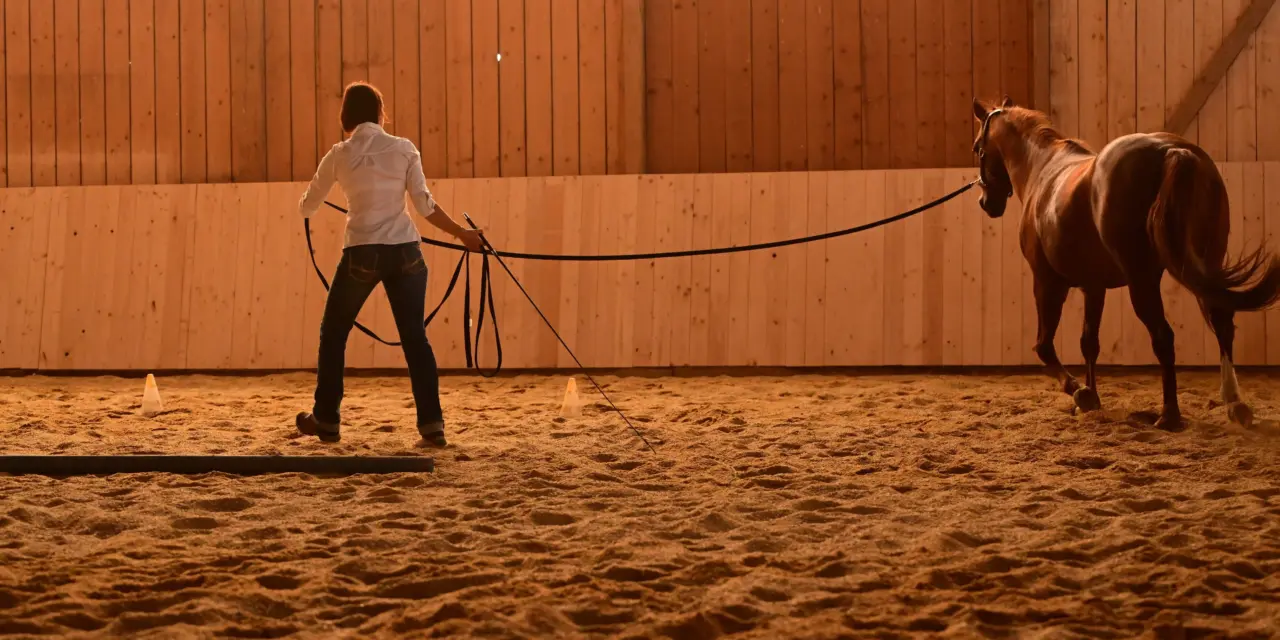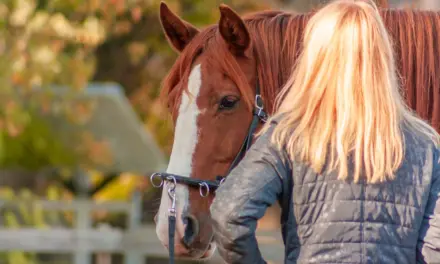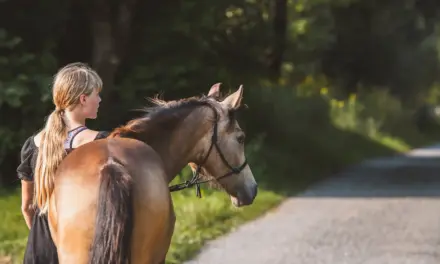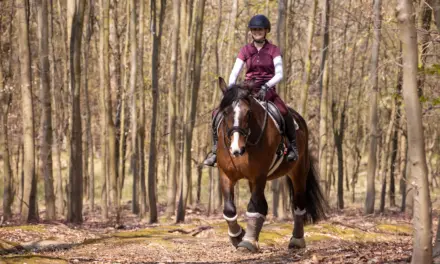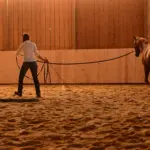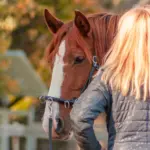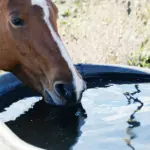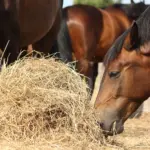Key points at a glance:
- Body posture speaks volumes – an upright, relaxed posture signals competence and calm
- Steer your energy consciously – find the right balance between presence and composure
- Use your breathing as an anchor – deep abdominal breathing calms both you and your horse
- Clarify your thoughts and expectations – break negative spirals and set realistic goals
- Rituals create focus – intentional preparation routines help you switch into the right mental state
A person’s mental state is the often underestimated key to success in groundwork with horses. Horses are masters at reading body language and energy – they immediately sense whether someone is relaxed, stressed, unsure or confident. Deliberate mental preparation can make the difference between frustrating and harmonious training sessions.
The power of body posture
Body posture is the first signal the horse receives, even before a word is spoken or a deliberate movement is made. Horses are muscle readers, meaning they notice even the smallest tension. An upright yet relaxed posture conveys competence and calm. Loose shoulders, a level head and a stable but not rigid stance are ideal.
Making yourself small or hunching your shoulders signals insecurity or tension. At the same time, you should avoid standing with your legs exaggeratedly wide apart or coming across as aggressive, as this can unsettle or provoke the horse. The ideal posture is that of a calm, confident person who knows what they are doing, yet remains relaxed.
The position of your arms and hands is especially important. Arms that hang loosely and relaxed signal composure, while folded arms or tense, clenched hands transmit stress. How you hold the lead rope is also crucial – too tight a grip passes your nervousness straight on to the horse, whereas hands that are too loose can convey uncertainty.
Managing your energy mindfully
Horses are extremely sensitive to the energy people give off. Too much energy can make them nervous, too little can bore them or encourage them to take over the leadership role. The art lies in finding the right balance of energy for each situation and each horse.
Observing the horse is essential here: a calm, relaxed horse may need a little more energy from you in order to stay motivated. A nervous or fiery horse, on the other hand, benefits from a consciously reduced, soothing presence. The key is being able to adjust your own energy – turning it up or down as needed – to suit the horse and the situation.
This regulation of energy starts on the inside. If you come to the horse feeling stressed or rushed, you should consciously take a moment to calm yourself. Deep breathing, relaxing your muscles and mentally preparing for the time with your horse can have a positive influence on the whole training session.
The power of correct breathing
Breathing is one of the most powerful tools for self-regulation and directly influences your whole presence. Shallow chest breathing signals stress and tension, whereas deep abdominal breathing signals calm and control. Horses are highly aware of these differences and respond accordingly.
Conscious abdominal breathing is particularly recommended in challenging situations. Placing one hand on your stomach can help you feel it rise as you breathe in and fall as you breathe out. This type of breathing activates the parasympathetic nervous system and automatically triggers a relaxation response – not only in the person, but also in the horse through the change in your overall presence.
Breathing can also be used as a means of communication. A deliberate, audible exhale can signal to the horse that it can relax. Conversely, a slightly more pronounced inhale can lift the energy and signal to the horse that you are asking for more attention.
Clear thoughts and realistic expectations
Negative thought patterns can become self-fulfilling and lead to a downward spiral in groundwork. If you approach your horse already expecting that things “won’t work again today”, you unconsciously transmit this negative energy. Consciously working on noticing destructive thoughts and replacing them with constructive ones is important.
Realistic goals should be set for every training session. Too much demand leads to frustration, too little to boredom. A well-chosen goal is achievable, but still challenging enough to motivate both partners. It’s important to remember that every small step forward is a success, and that setbacks are a natural part of the learning process.
A positive inner attitude towards the horse is essential. Seeing the horse as a partner, not as an opponent or an object, and respecting its individuality and limits while remaining clear in your expectations – this inner attitude of respectful cooperation directly shapes your presence and, with it, the quality of your communication.
Building focus and presence
Horses live in the moment and expect the same from their human partners. If your thoughts are on your next appointment, a recent argument or other worries, you will never be able to build a deep connection with your horse. The ability to be consciously in the here and now needs to be developed. Putting your phone on silent is also a good idea to avoid distractions.
Time with your horse can be used as a form of meditation. Fully concentrating on what is happening right now – the horse’s movements, its reactions, the quality of its attention – is not only valuable for the training itself, but also a source of relaxation and inner peace.
When your thoughts start to wander, you should gently bring your attention back to the present moment. Watching the horse’s movements, feeling the lead rope in your hand or consciously noticing your own footsteps can all serve as anchors to help you stay grounded in the here and now.
Rituals for mental preparation
Personal rituals can make it easier to get into the right headspace for working with your horse. This might be a conscious walk down to the field or stable, using the time to let go of everyday thoughts. It could also be a quiet moment of greeting, where you simply stand with your horse, make gentle contact and give both of you a chance to tune in to one another.
Some people use brief relaxation exercises or mental visualisations before they begin the actual work. Imagining the training session unfolding in a harmonious and successful way primes the subconscious for success and helps you start with the right inner attitude.
Rituals can also be helpful after the training session. Taking a moment to consciously reflect on what happened, spending a grateful, quiet moment with your horse or simply taking a few deep breaths can help to anchor the positive experiences and process any frustration in a constructive way.
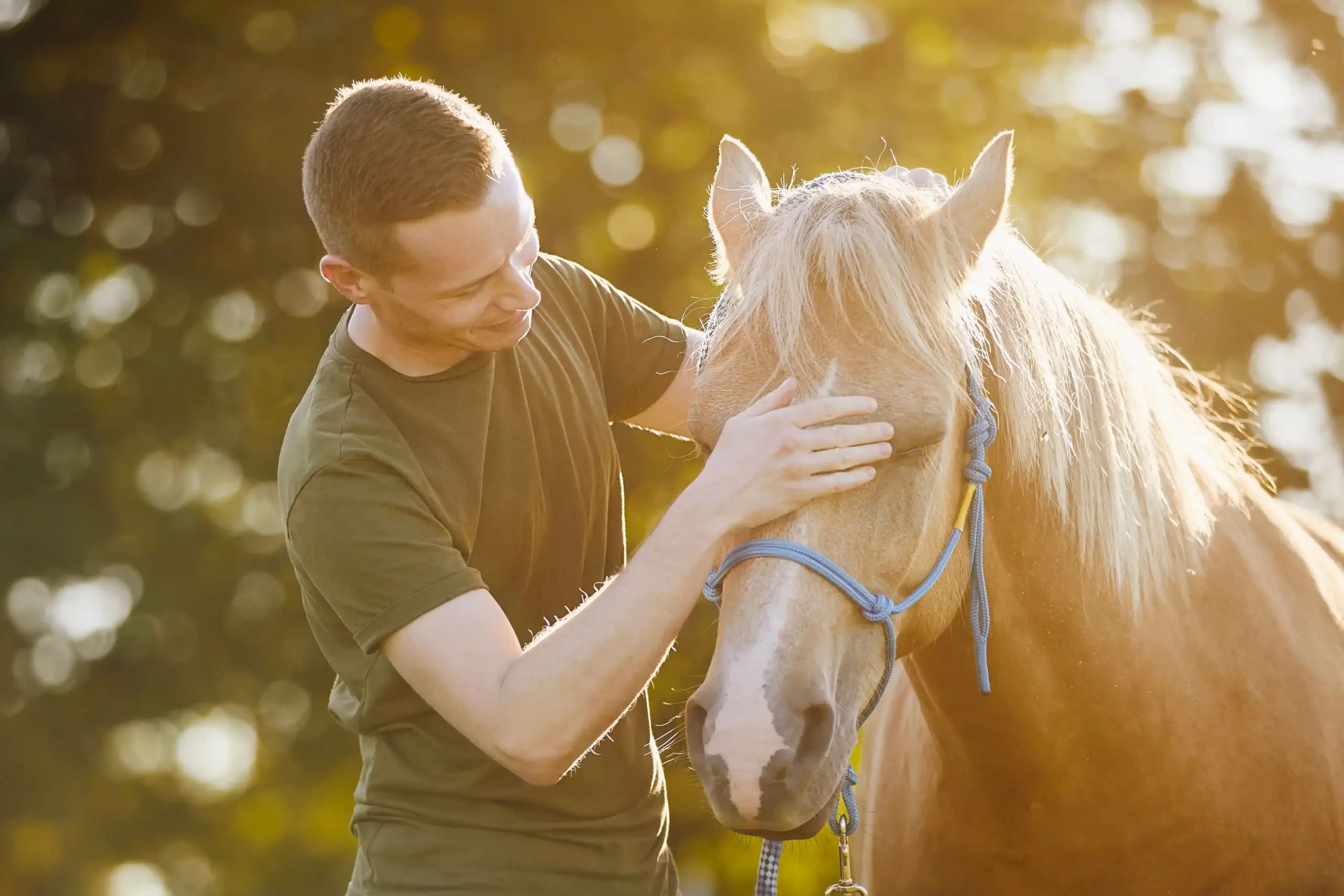
Dealing with setbacks
Not every training session goes to plan, and that’s completely normal. What matters is how you deal with setbacks. Frustration and anger are immediately picked up by the horse and only make the situation worse. It’s crucial to recognise when it’s time to take a break or end the session. If nothing is working at all, it’s better to stop and start again the next day, without dwelling on the previous day’s difficulties.
Difficulties should be seen as learning opportunities, not as failures. Every problem that arises highlights an area that can be worked on. This solution-focused mindset helps you stay constructive even in challenging situations and maintain a positive presence.
It’s worth developing strategies for dealing with stress during training. These might include breathing techniques, mental “stop” signals or simple physical relaxation exercises. The better your self-regulation, the more consistent your leadership becomes – and the more trust your horse will develop.
Self-reflection as the key to success
Honest self-reflection is an essential part of mental preparation. It is important to observe your own behaviour during groundwork: how do you react to unexpected situations? When do impatience or insecurity arise? Which behaviours lead to positive, and which to negative, reactions from the horse?
A training diary can help you record not only your horse’s progress, but also your own development. Making a note of your own state of mind during training and how it affected the session allows for conscious observation. This, in turn, helps you recognise patterns and work on your mental preparation in a more targeted way.
Conclusion – The person in the lead role
In groundwork, the human bears responsibility for the quality of communication as the leader. The horse responds to what you project, not to what you intend to convey. Deliberate mental preparation is therefore not just helpful, but essential for successful groundwork.
Developing mental strength and balance is a lifelong process. It is important to be patient with yourself as you learn to consciously manage your own presence. Investing in your mental state pays off not only in better groundwork, but in every other area of life with horses – and beyond.
- Mental preparation of the person - 10. November 2025
- Preparing the horse for groundwork - 10. November 2025
- Lactate in the horse muscle: From misunderstood ‘waste product’ to performance booster - 26. August 2025

